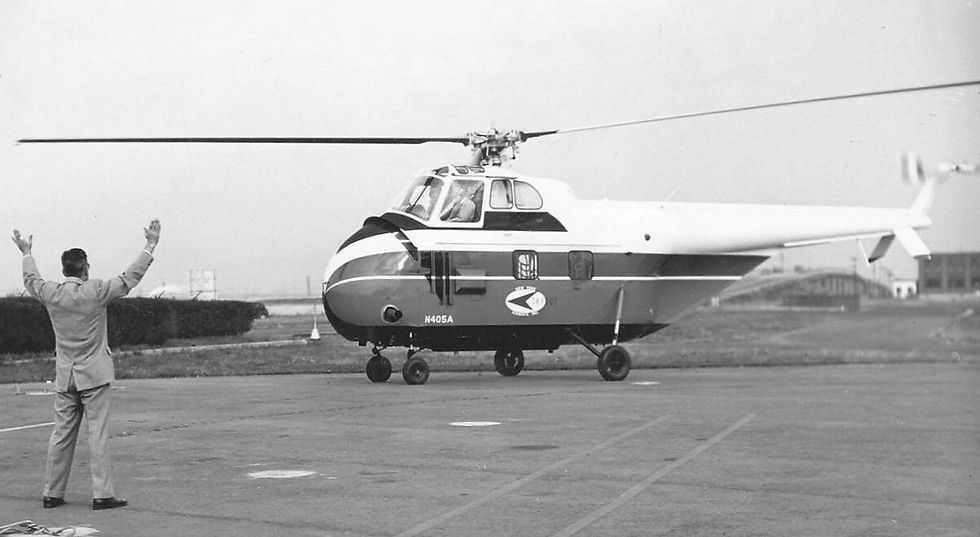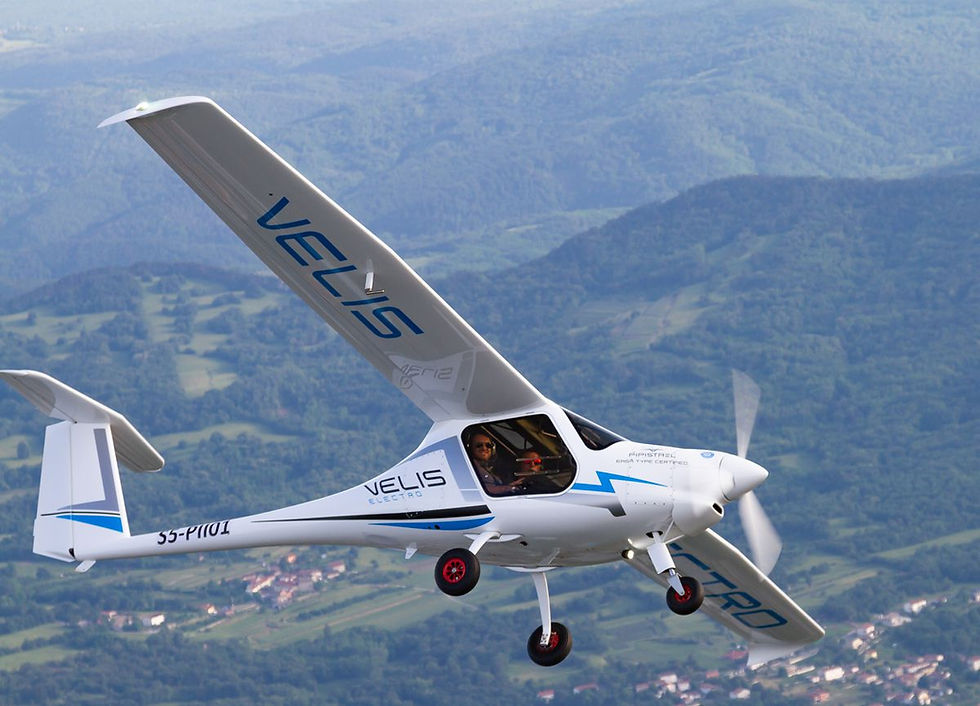Rural Air Mobility – connecting rural areas with the World
- Gary S Vermaak
- Jul 19, 2021
- 5 min read
About the author: Gary S Vermaak is the founder of AirTaxi Now & Drones4Good and co-founder of Armored Air Cargo. Following national service in the South African Air Force, he qualified as a professional accountant, his career has covered banking, finance, IT, mining, supply chain and utilities. He currently consults on, promotes and is active in air mobility.
Introduction
Air mobility is not a new concept, and the term was first used by the US Air Force in the 1960s. Following the rapid advances in aircraft technology during World War One, civil aviation took off in the 1920s as former military pilots bought surplus WW1 aircraft and started offering air charter (air taxi) and cargo services.
Today, despite COVID-19, millions of people fly every day in aircraft ranging from 2-seater helicopters and light aeroplanes to large four-engine Airbus A380s.
The Advanced Air Mobility (AAM) ecosystem includes Urban Air Mobility (UAM) and Regional Air Mobility (RAM). Urban Air Mobility started with the helicopters; when Bell Flight introduced the first civilian helicopter, the Bell 47, in 1946 and New York Airways introduced the first Air Taxi in 1953. Air taxi services are offered by Book My Helo and Helipass in Europe, Ascent in the Philippines, and Blade Urban Air Mobility in Los Angeles, Mumbai, Pune, New York City and San Francisco.

New York Airways Sikorsky S-55. Source: This day in aviation
Rural and Regional Air Mobility date back to the 1920s, when people in remote rural areas relied on air taxi services to connect them to the world, deliver supplies and reach medical facilities. This included communities from Alaska and the Canadian North to Patagonia, as well as the Australian outback to the Amazon basin.
Current and future regional and rural air mobility may be implemented using Short Take-Off and Landing (STOL) or Vertical Take-Off and Landing (VTOL) vehicles. STOL aircraft can take off from short runways (often made of dirt or grass), whilst VTOL aircraft do not require a runway and can use bush clearings or helipads (and vertiports) instead.
There is no shortage of affordable aircraft that are suitable for rural air mobility, such as piston engine and/or turboprop aircraft from manufacturers like Beechcraft, Cessna and Mooney or Robinson helicopters. STOL Regional Air Mobility aircraft range from the Turboprop ATR42 /72 and Bombardier Dash 8, to the BAE146 jet and helicopters from aerospace companies like Airbus, Bell, Leonardo, and Sikorsky.
What are the benefits of Rural Air Mobility?
Rural Air Mobility is about connecting rural agricultural centres, commercial centres and remote mines with the world using the best available commercial technologies, such as planes and remote/autonomous pilot systems. RAM can provide just-in-time spare parts and daily supplies to remote mines while allowing agricultural hubs to export their fruit, vegetables, flowers, fresh meat or fish to the major produce markets in Europe and Asia. Products can be flown directly to major hub airports in developing countries like Addis Ababa, Johannesburg, and Nairobi, as well as for overnight air cargo to major metropolitan cities in Europe and Asia.
Aircraft can also be used to transport health care workers to remote towns and villages, or transport patients to major African cities for medical treatment. Rural Air Mobility provides those living and working in remote rural areas with fast access to major cities and towns regionally, especially where roads are in bad conditions and rail lines are scarce.
MagniX Cessna 206B Electric Caravan. Source: MagniX
For affordable cargo and passenger RAM, it is crucial to minimise the total cost of aircraft ownership for RAM Part 135 certification or equivalent operators, as well as using appropriately-sized aircraft for each mission. Remotely piloted and autonomous aircraft are key to cargo RAM, as they allow for optimal transportation of small items (like blood samples and vaccines) and heavy or large items (like earth moving and pump spares).
Companies like Near Earth Autonomy, Skyryse and Xwing have demonstrated that existing aeroplanes, such as the Cessna 206 Caravan, and helicopters, such as the Kaman KMax and Robinson R44, can be converted to Unmanned Aerial Vehicles (UAVs) and remotely piloted aircraft.
Rural air mobility also provides an opportunity to upskill and train locals as mechanics, technicians, remote pilots and commercial pilots, creating a local aerospace and aviation skills base in developing countries.
The electric age of aviation and RAM
Given the global push for more sustainable aviation, regional and rural air mobility offers the “low-hanging fruit” for decarbonising aviation due to the shorter distances involved. With over 300 electric aircraft projects, including eCTOL (conventional take-off and landing), eVTOL and eSTOL vehicles, the third era of aviation/the electric age is taking off at speed. These projects are all at various stages of development, from design to the type certification process, and the first eAircraft to be type certified on 10 June 2002 by the EASA will be the Pipistrel Velis Electro.

Pipistrel Velis Electro. Source: Pipistrel
Initiatives like Ampaire, MagniX and Tier 1 Engineering are replacing turbine engines with electric motors on existing aircraft, given that only a supplemental type certification is required for these changes, which is easier than certifying a new vehicle entirely. This is not only a way to green existing aircraft, but also enable a faster introduction to service.
Electric propulsion aircraft (hybrid, battery, or fuel cell) may lack the range of a turbine engine aircraft, but given that most regional intercity flights are less than 200 miles / 320 km, electrically propelled aircraft can replace turbine-engineered aircraft on these missions.
eAircraft are likely to be cheaper to operate and maintain than conventional aircraft, and they will also be quieter. While acquisition cost will be higher on a like for like basis, they promise to provide more affordable logistics and passenger services to rural communities in the future.

Tier 1 Engineering Electric Robinson R44. Source: Tier 1 Engineering
Batteries can be charged with renewables like solar and wind, whilst the electrolysers that produce green hydrogen use renewable electricity. Therefore, the movement and storage of avgas, mogas and Jet-A1 fuels in remote locations can be avoided. Similarly, electric motors have far fewer moving parts than any piston or turbine engine, which allows for reduced inventories and simpler maintenance, especially in remote locations.
Article Terminology
- 14 CFR Part 135 Air Carrier and Operator Certification - An Air Carrier certificate is issued to an applicant that will conduct interstate, foreign, or overseas transportation, or will carry mail.
- Avgas, Mogas and Jet-A1 - Common fuels used in aviation or automotive applications
- eAircraft - electric aerial vehicle
- eCTOL - electric conventional take-off and landing fixed wing aircraft
- eSTOL – electric short take-off and landing fixed wing aircraft
- eSTOVL - electric short take-off and vertical landing fixed wing aircraft
- eVTOL – electric vertical take-off and landing fixed wing aircraft
- Electrolyzers - A system which uses electrolysis to break water into hydrogen and oxygen with electricity
- Inventory - Storage of goods or materials
- Like for like basis - The measurement of identical things
- Type Certification - Type certification is the approval of the design of the aircraft and all component parts (including propellers, engines, control stations, etc.). It signifies the design is in compliance with applicable airworthiness, noise, fuel venting, and exhaust emissions standards.
References and Further Reading
- Ampaire Cessna EEL hybrid electric fixed wing (CTOL) aircraft. Available here.
- Bell 47. Available here.
- Magnix Cessna 206B eCaravan fixed wing aircraft and De Havilland Beaver seaplane. Available here.
- Near Earth Autonomy. Available here.
- New York Airways. Available here.
- Pipistrel Velis Electro Light Sport Aircraft. Available here.
- Pipistrel Velis Electro Light Sport Aircraft Type Certificate. Available here.
- Skyryse. Available here.
- Tier 1 Engineering Robinson R44 helicopter. Available here.
- Xwing. Available here.

Comments